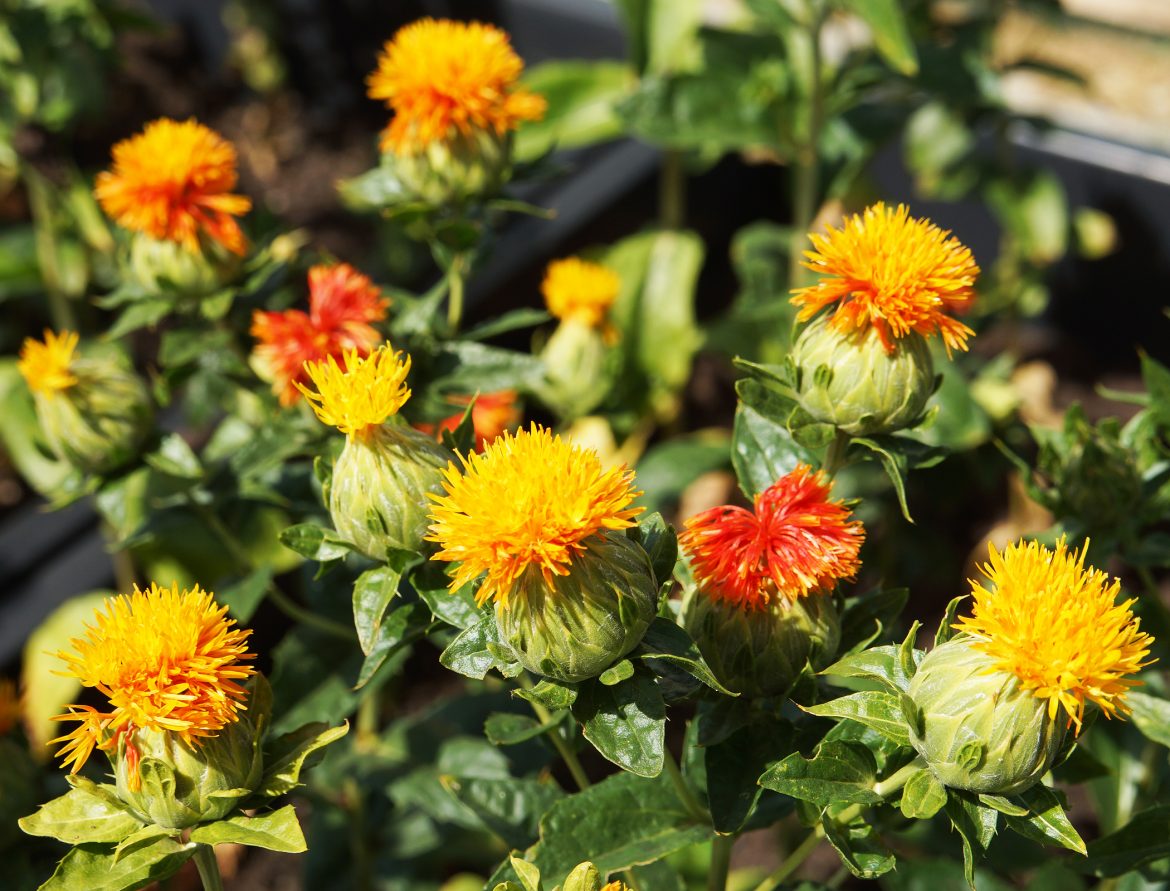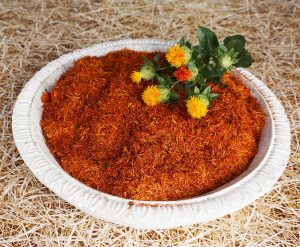
STUNNING SAFFLOWER
| 5th August 2020SAFFLOWER
(Carthamus tinctorius)
A cheerful and bright addition to any dye garden!
It is an annual thistle mostly grown for the oil that can be extracted from its seeds. It is commercially cultivated for vegetable oil and was used by the early Spanish colonies as a substitute for saffron.
It is sometimes referred to as bastard saffron or poor man’s saffron.
Historically an important food and natural dye plant. The petals contain the pigment carthamin and were used as far back as 3500 B.C by the Egyptians a dye source.
It has been reported that safflower garlands were discovered in Tutankhamen’s tomb and mummies were often wrapped in linen that were dyed with safflower.
In the 16th century England legal documents were tied together with red tape to prevent them from being tampered with, and it was the red dye from safflower that was used to dye the tape.
Yellows, pinks, orange-reds, and corals can be extracted from the petals.
The red dye is suitable for cotton, linen, and silk – but not wool.
The yellow dye can be used for both plant and animal fibres.
Harvesting the flower petals requires care. They are picked just as they begin to wilt and can be used fresh or dried.



